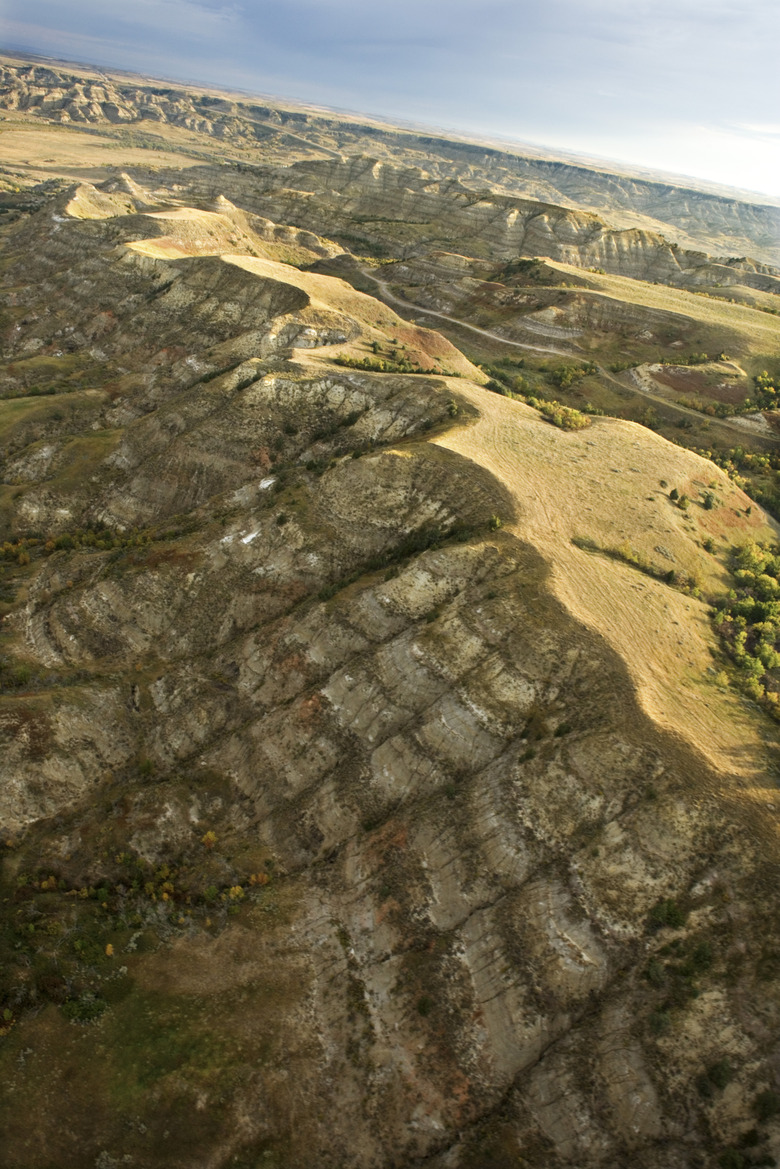What Natural Activities Work To Break Down Rock?
The breakdown of rocks due to exposure to natural forces – a process known as "weathering" – results in changes to the landscape of the planet. The shapes of landforms can change over time due to weathering, and weathering can even create new landforms entirely. For example, the Grand Canyon is an example of a landmark created through the long-term weathering of rock.
Physical Weathering of Rocks and Landforms
Physical Weathering of Rocks and Landforms
Weathering occurs through two primary methods: physical forces and chemical forces. In physical weathering, also known as mechanical weathering or disaggregation, a physical force causes rock to break or crumble. Some common elements in physical weathering of rocks include water, wind and even plant roots.
How Water Works to Break Down Rock
How Water Works to Break Down Rock
Water can contribute to weathering in several different fashions. Streams flowing past rock and waves hitting a shoreline can slowly wear away the rock. Water flow often smooths the surface of the rock as it erodes the surface as well. However, liquid water isn't the only form of water-based weathering.
Ice also contributes strongly to the weathering and erosion of rock. In its liquid form, water seeps down into cracks and pores in the rock. When the temperature drops, that water freezes. During the process of freezing, water molecules expand. The expanding ice slowly cracks and pushes the rock apart.
As the process continues, the cracks within the rock widen due to expanding ice. Additional water can now seep into those cracks, and when that water freezes, it continues to expand and separate the rock. Over time, freezing can result in drastic changes to rock.
How Wind Works to Break Down Rock
How Wind Works to Break Down Rock
Wind can be a powerful force; just ask anyone who has lived in the path of a hurricane or tornado. However, you wouldn't imagine that a light wind could move mountains. Though the process certainly doesn't occur very quickly, wind can absolutely weather and erode rock.
Blowing wind moves tiny grains of sand along with it. These granules of sand work in a similar fashion to sandpaper. They slowly wear away at the rock they are blowing over or into. Over long periods of time, this movement can alter the shape of rock.
How Roots Works to Break Down Rock
How Roots Works to Break Down Rock
Plants are versatile organisms that can frequently survive in incredibly harsh conditions. Even tiny plants can contribute to the weathering of rocky surfaces. Plants impact rocks through the growth of their roots. For example, a seed might become lodged in the soil of a small crack in a rock. Over time, as the plant grows, the roots dig deeper into the crack, expanding it and widening it even more.
The roots of larger plants, such as trees, can even infiltrate and break large rocks and boulders!
Chemical Weathering of Rocks and Landforms
Chemical Weathering of Rocks and Landforms
As the name suggests, chemical weathering occurs through the introduction of chemical substances to the surface of rock or through chemical changes in the rock's structure. A common form of chemical weathering involves carbonic acid. Carbon dioxide from soil or air combines with water, resulting in carbonic acid.
Though carbonic acid is considered a "weak" acid, it still has the ability to dissolve rock. However, certain types of rock dissolve more readily when exposed to carbonic acid. For example, carbonic acid seeping through and dissolving limestone frequently results in the creation of cracks and even massive caverns or caves.
Other forms of chemical weathering include oxidation of rust, chemicals interacting resulting in hydrolysis, minerals changing when they interact with water through hydration and more. Even a process as simple as decaying organic matter can contribute to chemical weathering of rocks!
Cite This Article
MLA
Zinni, Yasmin. "What Natural Activities Work To Break Down Rock?" sciencing.com, https://www.sciencing.com/natural-activities-work-break-down-rock-16920/. 1 December 2021.
APA
Zinni, Yasmin. (2021, December 1). What Natural Activities Work To Break Down Rock?. sciencing.com. Retrieved from https://www.sciencing.com/natural-activities-work-break-down-rock-16920/
Chicago
Zinni, Yasmin. What Natural Activities Work To Break Down Rock? last modified March 24, 2022. https://www.sciencing.com/natural-activities-work-break-down-rock-16920/
